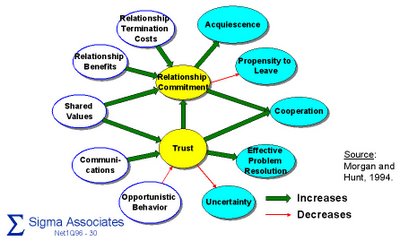Carlos Ghosn is one of my favorite business leaders. He is not afraid of oversized challenges and certainly faces them at present at both of his jobs as CEO of both Renault and Nissan. I'm glad (and maybe he is too) that the discussions with GM aborted. He has plenty to do without another distraction at present. (He may be right that eventually his alliance needs a North American partner, but this, as he readily admits, is hardly the ideal time.
One of Ghosn's strength is to meld "threat" with "promise". He is a big believer that constant new product introduction is essential for a successful automaker. He understands that a robust cash flow is a necessary, but not sufficient, condition for timely new product introductions. He sells continuous and sometimes radical cost reduction as a necessary element for assuring healthy cash flow, hence new product possibilities. This marriage of "carrot" and "stick" has been essential in the past for both Renault and Nissan, particularly effective at the latter.
Hopefully, approaches like this will continue to allow Ghosn to lead both companies to new heights, despite the "bumpy road" described below. Inside the auto chief's hyperefficient world
of hands-on managing. Can it really save the industry?
Cuing up Fatboy Slim
By MONICA LANGLEY
October 28, 2006; Page A1
MAUBEUGE, France -- Stalking the factory floor of Renault SA's plant here last month, Chief Executive Officer Carlos Ghosn reminded managers of the car maker's commitment to boost its profit margin by 50% by 2009.
"Commitment is a strong word," one manager piped up, "and circumstances have changed" since the marching orders were delivered earlier this year.
"It's not a target," snapped Mr. Ghosn, who considers the profit-margin increase mandatory. "Either management performs or it's out -- and that applies to me as well."
Mr. Ghosn's accept-no-excuses attitude, his tendency to insert himself into the smallest aspects of his business and his celebrated turnaround of Tokyo-based Nissan Motor Co. have made him the closest thing the auto industry has to a rock star. Earlier this week, he was even knighted by Queen Elizabeth for Nissan's contributions to the British economy.
 Ghosn]" border="0" height="273" hspace="0" vspace="0" width="197"> Ghosn]" border="0" height="273" hspace="0" vspace="0" width="197"> |
| Carlos Ghosn |
In recent months, his name has been floated as a potential savior to the beleaguered U.S. auto industry -- sparking some high-level maneuvering in Detroit. But on the factory floors of France, Mr. Ghosn is under pressure now to show he is more than a one-hit wonder.
Boosting results at Renault, which he took over last year, is proving tough. Although the French company turns a profit, its model lineup is aging and profit has been sliding. In Japan, Nissan, which Mr. Ghosn continues to run, said Wednesday that second-quarter vehicle sales dropped 7.6%. In addition, several weeks ago, Mr. Ghosn's bid to form an alliance with General Motors Corp. fizzled.
"People are wondering if the magic is gone," Mr. Ghosn concedes in an interview.
The hard-charging, 52-year-old executive shot to fame a few years ago by rescuing Nissan from near collapse and giving it one of the highest profit margins among global car makers. Last year he added a second job seven time zones away: chief executive of Paris-based Renault, which has an alliance with Nissan. Each company holds a stake in the other.
Mr. Ghosn's name still looms large in Detroit despite the failed GM talks. Some believe he will eventually play a central role in the U.S. industry's efforts to figure out a way to compete with the Toyota Motor Corp. juggernaut. Mr. Ghosn (rhymes with phone) contends that the only way to compete effectively with Toyota is through an alliance that spans the globe, and that U.S. car makers cannot wait for a miracle or an earthquake to stop the world's strongest auto company. DaimlerChrysler AG and Ford Motor Co. have put out feelers to him about potentially working with him in the future.
In Detroit, discussions about Mr. Ghosn lead invariably to two questions: Is this the man that U.S. auto makers need to pull them out of their tailspins? And would his style fly in America?
A series of interviews with Mr. Ghosn in France and Japan reveal a controlling, hands-on manager who noses into the details of everything from car designs and advertising campaigns to the wording of management brochures and the cleanliness of factory floors. He surveys hundreds of thousands of employees anonymously to evaluate the quality of his managers.
He even selects the music for his public appearances. His current choice: "Right Here, Right Now," by Fatboy Slim. At some auto shows, the tune blares as he walks down a runway and mounts a small circular stage in a dark pinstriped suit. He likes to address his audience in the round.
"I've never seen an executive whose presence is felt at every level up and down the ranks" like Mr. Ghosn's is, says John Casesa of Casesa Strategic Advisors, a New York auto consulting firm. "He's got the best track record of any CEO in the auto business. But the jury is still out if he can create a great global company."
Kirk Kerkorian, GM's largest individual shareholder, and his adviser Jerome York are fans and were the catalyst for the recent talks about a global alliance. They admire Mr. Ghosn for his straight-talking, results-oriented management style, particularly his willingness to reveal profit and sales targets to the markets -- then to deliver on them. They contend this is precisely the tonic Detroit needs.
Skeptics question whether he pushes to meet his goals at the expense of other long-term objectives such as quality and steady product stream. Although the quality of new Nissan models, as measured by J.D. Power & Associates, climbed above the industry average last year, their long-term reliability was below average, lagging behind GM brands such as Buick and Cadillac.
And in a September report, Bernstein Research said that Renault's stock had been "sustained by expectation," but that "near-term fundamentals are bleak." Mr. Ghosn's sales targets, it said, "look increasingly unrealistic."
For U.S. auto makers looking to expand abroad, Mr. Ghosn's global background is appealing. A Brazilian-born Frenchman of Lebanese parents, Mr. Ghosn is fluent in four languages -- English, French, Portuguese and Arabic. He oversees companies operating in more than 100 countries. If measured together, Renault and Nissan would constitute the world's fourth-largest car maker.
![[Speed Bump chart]](http://online.wsj.com/public/resources/images/P1-AG115A_Ghosn_20061027191644.gif)
As a boy growing up in Porto Velho, Brazil, and in Beirut, Mr. Ghosn recalls, he developed a passion for cars and could distinguish between makes by the sounds of their horns. After earning an engineering degree in Paris, he took a job at Michelin SA, the French tire maker, and rapidly climbed the ranks. In 1996, he was recruited to serve as the No. 2 executive at Renault. His subsequent decision to close a factory provoked widespread protests. The French press dubbed him "le cost killer."
In 1999, Renault invested in near-bankrupt Nissan and dispatched Mr. Ghosn to Tokyo to take charge. He began studying Japanese and, in what he describes as an effort to show respect to his elders, retained Nissan's top Japanese executives to work with his team of Renault veterans.
But he broke from tradition by prescribing tough medicine. He sold off Nissan's ownership stakes in many top suppliers, raising much needed capital, and shut down a factory in Japan. He set an aggressive target to boost world-wide sales by one million vehicles by 2005, and rushed jazzy new designs through the development pipeline. His turnaround plan succeeded, and he became a celebrity in Japan. He was even the hero of a comic book.
In April 2005, Mr. Ghosn also took the helm at Renault. He moved his family back to their Paris home, keeping an apartment in Tokyo. The French company was healthier than some European rivals and was turning a profit. But except for its Megane and Clio models, its vehicle lineup wasn't selling well. Sales were zigzagging and profit margins were sliding. Renault's managers were shooting for a 4% margin, far below the nearly 10% margin at Nissan.
"I want specific objectives -- they can't be too short- or long-term -- that are fundamental, understandable and a stretch to achieve," Mr. Ghosn explains.
Earlier this year, he formally raised the bar. His plan, called Commitment 2009, calls for a 6% profit margin and for expanding world-wide vehicle production by nearly one-third, or 800,000 a year, by 2009. He ordered each department and factory to come up with a plan to meet the objectives. He personally fiddled with the wording of internal brochures and posters promoting the plan, he says, to make his intentions "clear and with no ambiguity." He even helped design the logo for the campaign.
During a visit last month to this French factory, which makes the Kangoo compact van, Mr. Ghosn pressed each department head about how they would contribute to the plan. He roamed the factory floor, surrounded by the factory's top managers, eyeing how tools and parts were arranged, even stopping one worker loading parts into a bin. "You're putting that part in the wrong slot," he said.
At a meeting with union representatives, he pressed them on worker absences. During lunch, he slammed the factory's top managers for the high absentee rate. "We have a 4% rate....Peugot and Toyota factories nearby have 2%," he said. "Does your action plan include getting rid of those not playing by the rules?"
The managers exchanged nervous glances and said they were studying the problem. Mr. Ghosn persisted: "An absent employee penalizes his team. With 14% unemployment in this area, I want those who really want to work....The unions I spoke to today have agreed to help."
On the company's Gulfstream jet back to Paris, Mr. Ghosn worked with a speechwriter on an address he planned to deliver to senior Nissan and Renault executives. Mr. Ghosn slashed adverbs and adjectives, reducing sentences to match his blunt style: subject, verb, object. "I don't want one word that's artificial," he said. He ordered up supporting numbers for the text, noting that numbers are a universal language.
The following day, Mr. Ghosn raced through a series of back-to-back meetings at the company's headquarters overlooking the Seine River. Some executives were allotted just 10 minutes. "With Mr. Ghosn, you don't chitchat," says Dominique Thormann, an executive who has worked at both Renault and Nissan. "When you walk into his office, you're there for a purpose that you've cleared ahead of time. He's in a hurry. He's almost obsessed with time."
Mr. Ghosn had to step up his pace when he agreed to run both auto makers. He receives two paychecks -- $2.1 million at Renault and an undisclosed sum estimated to be at least that much at Nissan. He carries two black briefcases, one for each company, and keeps his diaries and papers separate. His long hours in Japan earned him the nickname 7-Eleven, after the 24-hour convenience-store chain popular there.
In his sparsely decorated Paris office, his nearly spotless desk contains just a few papers and reports. It faces three clocks showing times in Paris, Tokyo and Nashville, Tenn., where he recently relocated Nissan's North American headquarters.
An air of formality permeates the offices of both companies. Everyone from senior executives to his driver calls him Mr. Ghosn -- never Carlos. His top advisers have never been to his home. "I've never been invited," says Patrick Pelata, a top Renault executive. Mr. Ghosn considers it vital to keep his professional and private lives separate.
Nearly every Saturday, he has a standing reservation for lunch with his wife, with whom he plays tournament bridge, and the three of his four children who still live at home. Shopping with his kids, he says, helps him "keep connected in music, fashion, youth." He uses them as a sounding board for whether his cars are hip. He was upset for a long time "because my kids never mentioned a Nissan car," he says. They do now, he adds. Image is important to him. Over the past few years, he has lost 20 pounds and had laser eye surgery to shed his glasses.
Although he remains a habitual micromanager, Mr. Ghosn no longer has time to delve into as many decisions at each company. When Michel Gornet, Renault's manufacturing chief, sought his advice on whether to shut down a plant for an extra couple of days, Mr. Ghosn told him: "This is your problem. I have no time for that." Carlos Tavares, Nissan's strategic-planning head, says he gets only an hour a month alone with Mr. Ghosn, and he sometimes has to cover 15 or more topics.
Nevertheless, Mr. Ghosn still seizes on small matters he deems important. With Renault preparing to introduce a new version of the Scenic, he reviewed storyboards for commercials featuring a baby elephant in the minivan. He groused that the ads didn't highlight an important feature for families. "Show the big trunk," he said. (The commercials now do.)
Improvements have been slow to come at Renault. World-wide vehicle sales are down 3.6% this year through September, and the company's European market share is off by one percentage point to 9.4%. Some industry analysts say it will be difficult for Mr. Ghosn to boost productivity at the company, which is partially owned by the French government, without cutting Renault's work force and closing plants -- a politically risky step in France.
Mr. Ghosn says that he expected the slow start, and that planned new models like a sport-utility vehicle developed with Nissan will boost sales. He predicts that both Renault and Nissan will take off in coming months, with the introduction of new models. Nissan plans to roll out an Altima midsize sedan, a Sentra compact and an Infiniti G-35 luxury sedan.
Mr. Ghosn is deep into the details of his pet project: Nissan's GT-R, a high-performance sports car boasting more than 450 horsepower and all-wheel drive. Mr. Ghosn has directed the company not to play up the vehicle's 180-mile-per-hour top speed. "Speed at the moment isn't very positive," he explained at a recent meeting. He directed the campaign to focus on the car's "unique driving experience."
Rob Schwartz of TBWA\Chiat\Day, who runs Nissan campaigns, recently presented five possible ads, featuring music ranging from John Lennon's "Power to the People" to Richard Wagner, the German composer. Mr. Ghosn singled out a new composition by a little-known band. "I like the bells with the metallic guitar -- precise, strong and unique," he says. Remarks Mr. Schwartz: "I've never talked to a CEO about instrumentation."
When news broke in June that Mr. Ghosn was talking to GM executives about a potential alliance, some industry observers wondered how much more he could take on. "I'd question how many companies even Carlos Ghosn can run," says Amir Anvarzadeh, director of Japan equity sales at KBC Financial Products in London, a Nissan bull. "His big ego helped when it gave him the confidence to do the impossible at Nissan, but at this stage, his ego could be a detriment if he tries to do too much."
The talks were the idea of Mr. Kerkorian and his adviser Mr. York, who was then serving on GM's board. From the start, Mr. Ghosn sensed that GM's chief executive, Rick Wagoner, had no interest in combining forces and that Mr. Wagoner resented Mr. Ghosn's car-czar status. GM executives let it be known that Mr. Wagoner preferred to hunker down to get results rather than work on his public image. After the news broke, some GM executives were taken aback that Mr. Ghosn invited auto reporters to one-on-one meetings in a corner suite at New York's St. Regis Hotel to share his thoughts about the possible tie-up.
Despite the tension, Mr. Ghosn pushed ahead, telling his team they had "nothing to lose." The way Mr. Ghosn saw it, an alliance would allow Renault, Nissan and GM to share costs on purchasing, design and manufacturing, potentially saving his two companies several billion dollars over five years.
Last month, over a dinner of quail eggs, grilled vegetables and steak at his favorite yakitori restaurant, Mr. Ghosn told Simon Sproule, a Nissan vice president: "Now we know the value of a North American partner." He reeled off the advantages of sharing vehicle platforms and combining purchasing. He spoke with admiration of GM's strong position in China.
"I'm in this for the long play," he told Mr. Sproule. He speculated that if talks with GM didn't pan out, Nissan-Renault would join with another Detroit auto maker, because the American companies would continue slipping.
Mr. Ghosn and Mr. Wagoner met last month at the auto show in Paris. Over lunch at Renault headquarters, Mr. Wagoner raised impediments. He argued that a deal would benefit Mr. Ghosn's companies more than GM and would give Nissan-Renault de facto control that would warrant a multibillion dollar payment to GM.
Within a week, Messrs. Wagoner and Ghosn called off the talks, and Mr. York resigned from GM's board. GM's stock dropped and Nissan's shares rose. Nissan investors had worried that an alliance with GM would distract Mr. Ghosn from Nissan's problems. Some Nissan dealers in North America also were concerned that associating with GM would dilute the value of their dealerships. "Ghosn is our rock star," one dealer said. "We don't want to share him."
The failed talks, Mr. Ghosn says, "convinced me of the absolute value" of a three-way alliance with a U.S. auto maker. "Who? When? How? I don't know. But I owe it to my stakeholders to pursue" such a deal after Nissan and Renault "get back their tail winds."
If Mr. Wagoner's turnaround plan for GM falters, Mr. Kerkorian, a fan of Mr. Ghosn, could push forcefully for a revival of the idea. Mr. Ghosn also could steer Nissan-Renault into talks with either Ford or DaimlerChrysler.
Ford Chairman Bill Ford has chatted with Mr. Ghosn as recently as this summer about working together. But talk of an alliance anytime soon is unlikely following the appointment last month of Alan Mulally as Ford's new CEO. Ford announced earlier this week a preliminary third-quarter loss of $5.8 billion.
A few months ago, Dieter Zetsche, DaimlerChrysler's chairman, discussed briefly with Mr. Ghosn the potential for working together, but there have been no further talks, according to people familiar with the situation.
Mr. Ghosn says he isn't actively seeking an alliance with a North American partner -- for now, that is. He says he is focusing on making improvements at Renault and regaining momentum at Nissan. In North America, dealer inventory on Nissan's new Versa compact has shrunken to just seven days -- a good sign -- forcing the company to boost production. It expects to post a double-digit gain in U.S. sales in October, compared with a year ago.
"People will be surprised at the positive news ahead," says Mr. Ghosn. "I'm not spreading myself too thin."
--Joseph B. White contributed to this article.
Write to Monica Langley at monica.langley@wsj.com

 Ghosn]" border="0" height="273" hspace="0" vspace="0" width="197">
Ghosn]" border="0" height="273" hspace="0" vspace="0" width="197">![[Speed Bump chart]](http://online.wsj.com/public/resources/images/P1-AG115A_Ghosn_20061027191644.gif)








![[Wilbur Ross]](http://online.wsj.com/public/resources/images/HC-GG792_Ross_20051021143237.gif)
![[Bipartisan Redeployment]](http://online.wsj.com/public/resources/images/ED-AE874_bideng_20061023171228.jpg)

